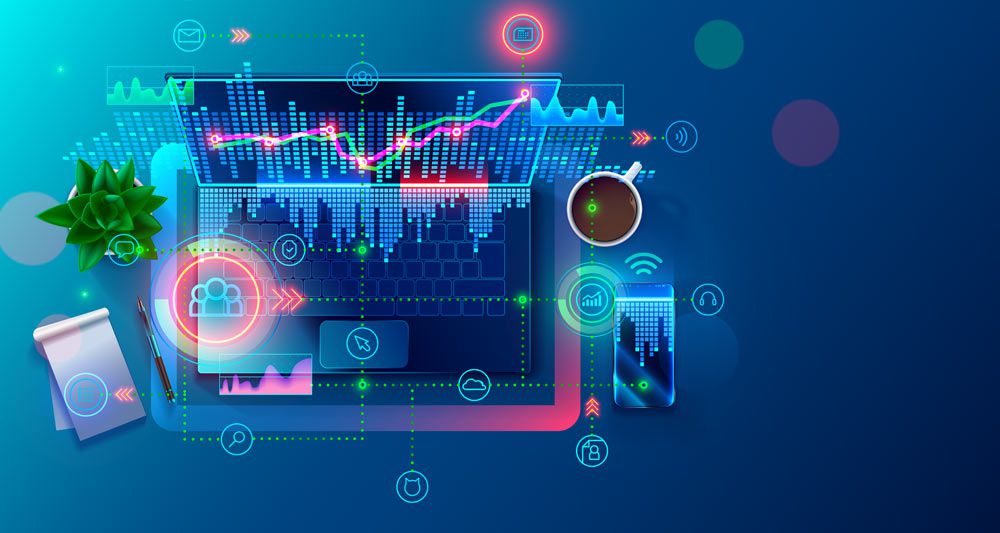What is Digital Disruption and Why is it Changing The Game?
05/04/2023
4.16k
Table of Contents
Digital disruption refers to devices, technologies, services, and ideas that have a significant impact on their respective industries and ultimately transform them profoundly.
By utilizing disruptive technology, enterprises might constantly break into new marketplaces or seize the chance to substitute established giants in a certain industry. It’s crucial to comprehend how this kind of technology affects various businesses. In this article, we examine the most outstanding examples of digital disruption, its advantages and disadvantages, and some of its most notable strategies.
4 Examples of Digital Disruption
Here are some examples of digital disruption:
Uber and The Taxi Industry
Companies like Uber have disrupted the taxi and transportation industry by offering convenient, app-based ride-hailing services. This has impacted traditional taxi services and forced them to adapt to new business models and technologies.
To remain relevant, big businesses must consider their customer experience and how it might be disrupted by smaller, more agile players, and then act to stay ahead of any encroaching competition.
Netflix and The Entertainment Industry
Netflix have disrupted the traditional television and movie industries by offering on-demand streaming of films, TV shows, and original content.
This has unquestionably accelerated the movement toward cord-cutting. Almost 35.5 million American families, or about 27% of all households, had paid cable service cancellation plans for 2021, and it is anticipated that this trend will continue.
Amazon and The Retail Industry
Online marketplaces like Amazon have transformed the retail landscape, making it possible for consumers to shop for virtually anything from the comfort of their homes. This has led to the decline of brick-and-mortar stores and forced traditional retailers to adapt to online sales.

Airbnb and The Hospitality Industry
In cities with increased demand for hotel rooms, where there is likely simply insufficient real estate to fully meet this need, Airbnb has the biggest influence on room availability and the hotel business.
The growth of Airbnb has had a significant impact on both the supply and demand sides of the hotel industry equation. It has also changed consumer expectations, fundamentally altering the demand side.
Advantages of Digital Disruption
- Benefits of innovation
Disruptive technology’s capacity to provide customers with novel and significant advantages is one of its fundamental characteristics. The entire industry is altered when this kind of technology hits the market. The internet has changed how people previously gathered knowledge, including through newspapers, libraries, and even social interactions.
Also, it transformed how people might conduct research. Individuals and organizations can both profit from the advantages that disruptive technology offers to their everyday activities by adopting it.

- Opportunities for startups
Startup businesses have potential to establish themselves significantly in mature markets thanks to disruptive technology. Early adopters of the new technology can position themselves as thought leaders in an untapped market.
Small startups now have a rare opportunity to develop quickly and possibly surpass bigger, more established businesses.
- Opportunity for business expansion
A well-established business has excellent development potential when it voluntarily adopts disruptive technology, either in its existing industry or in a new industry that the technology creates.
Companies that can seamlessly integrate disruptive technology into their existing line of products and services can assist existing customers in transitioning to the disruptive technology while also capturing new buyers with their entry into the new market.
Disadvantages of Digital Disruption
- Unrefined inventions
New technology is often untested and unrefined during its initial development stages, which can take years. Businesses may struggle to market innovative products during this period, and early adopters may deal with clunky prototypes.

- Initial performance issues
New ideas aim to solve existing problems, but they often face initial issues, like software bugs. Updates and patches are required to address these, which can make early adoption difficult.
- Untested software
Disruptive technology needs time to establish its market presence. Potential applications may be untested, causing consumers to question if the innovation can effectively replace its predecessors, such as cooks questioning early electric mixers’ performance compared to manual methods.
Strategies for Navigating Digital Disruption
Businesses must have a solid strategy in place to deal with digital disruption:
Embracing New Technologies and Digital Transformation
The process of digital transformation is strongly associated with digital disruption that happens when a new technological advancement disrupts the existing business environment and challenges the prevailing norms.
Digitalization is the transition from software-driven to human-driven processes. For companies, this conversion can be rather simple, and it frequently enables the core business model to stay intact.
Nevertheless, with digital transformation, technological innovation profoundly alters how businesses function and has an impact on their overall value proposition. An organization must rethink its entire operational strategy in order to survive, adapt, and integrate new technologies and digital innovation throughout the entire supply chain.

Investing in Research and Development
To be prepared for today’s fast-paced world, research and development (R&D) strategies are required to model technological innovation and serve as an innovation engine. Investing in R&D could provide a significant competitive advantage at the business, industry, or national level, as well as the level of innovation required by the UK economy to maximize growth.
R&D, exploration, analysis, discovery, and creativity will cultivate new insights and assist us in navigating. Without it, we’d have to rely only on our gut feeling and good fortune.
Fostering a Culture of Innovation and Adaptation
There is a strong relationship between a company’s innovation culture and its rate of growth. Simply put, businesses that promoted a strong culture of innovation experienced faster rates of growth and improved financial results.
No longer is culture the only determinant. Other factors that contribute to a company’s need and urgency to innovate include an industry’s competitive landscape, entry barriers, and degree of disruption. Furthermore, a company’s R&D spend, patents, and ability to scale innovation all have an impact on its ability to innovate. Our research, however, confirmed that culture plays a significant role.
Conclusion
Digital disruption has become a buzzword among businesses large and small. It’s also one of the most important trends today because it has the potential to radically change how we live and work. The impact of digital disruption can be seen across industries and markets, from the way consumers make purchases to the way businesses trade.
Do you want to learn more about digital disruption? Are you preparing for the changes in your industry? Don’t hesitate to contact SupremeTech for further support!
Related Blog





















